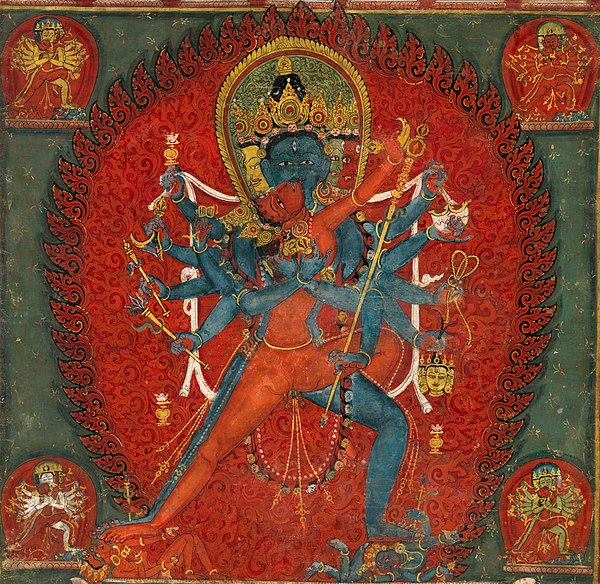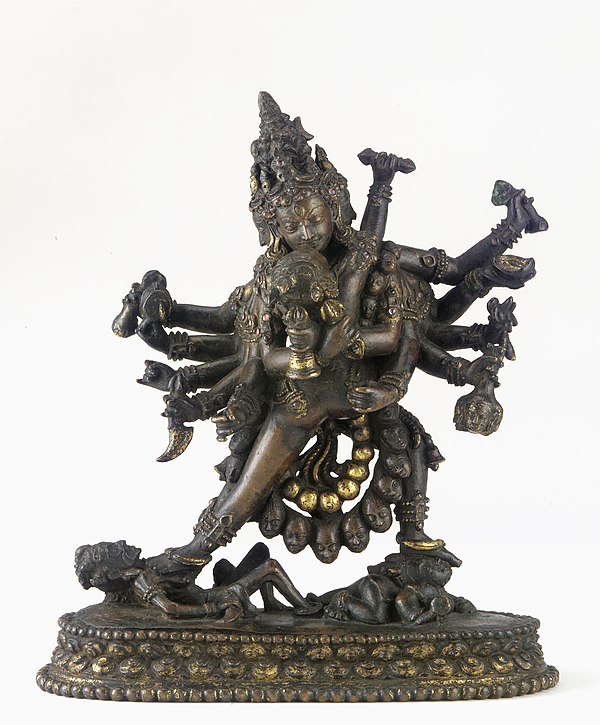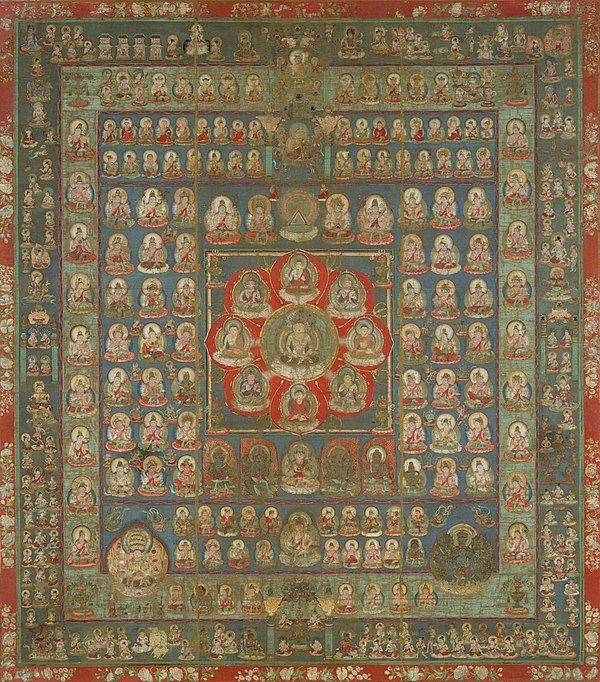Cakrasaṃvara Tantra
Videos
Page
The Cakrasaṃvara Tantra is an influential Buddhist Tantra. It is roughly dated to the late 8th or early 9th century by David B. Gray. The full title in the Sanskrit manuscript used by Gray's translation is: Great King of Yoginī Tantras called the Śrī Cakrasaṃvara (Śrīcakrasaṃvara-nāma-mahayoginī-tantra-rāja). The text is also called the Discourse of Śrī Heruka (Śrīherukābhidhāna) and the Samvara Light (Laghusaṃvara).

Saṃvara, the central deity of the tantra, with Vajravārāhī in Yab-Yum pose. Nepal, 1575-1600. Metropolitan Museum of Art

Sri Cakrasamvara and Vajravarahi. Nepal, 16th or 17th-century. Freer Gallery of Art

Cakrasamvara mandala, circa 1100, Nepal

Saṃvara 10th century, Ratnagiri, at the Patna Museum, Bihar
Buddhist tantric literature
Videos
Page
Buddhist tantric literature refers to the vast and varied literature of the Vajrayāna Buddhist traditions. The earliest of these works are a genre of Indian Buddhist tantric scriptures, variously named Tantras, Sūtras and Kalpas, which were composed from the 7th century CE onwards. They are followed by later tantric commentaries, original compositions by Vajrayana authors, sādhanas, ritual manuals, collections of tantric songs (dohās) odes (stotra), or hymns, and other related works. Tantric Buddhist literature survives in various languages, including Sanskrit, Tibetan, and Chinese. Most Indian sources were composed in Sanskrit, but numerous tantric works were also composed in other languages like Tibetan and Chinese.

A manuscript of the Vajravali, a tantric commentary by Abhayakaragupta (manuscript c. 11th or 12th century CE, Sanskrit in Nepalaksara script).

Kāraṇḍavyūha Sūtra manuscript (c. 14th century, Newari) with a miniature illustration of Avalokiteśvara

Chinese translation of the Vairocanābhisaṃbodhi (Awakening of Vairocana)

The Garbhadhātu maṇḍala, derived from the teachings of the Mahāvairocana Tantra. Buddha Vairocana is located in the center.